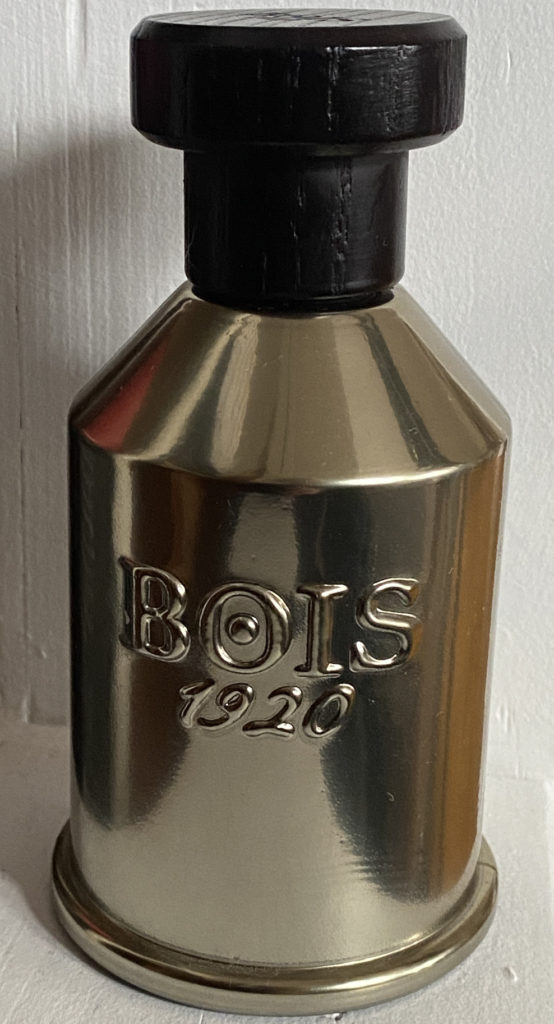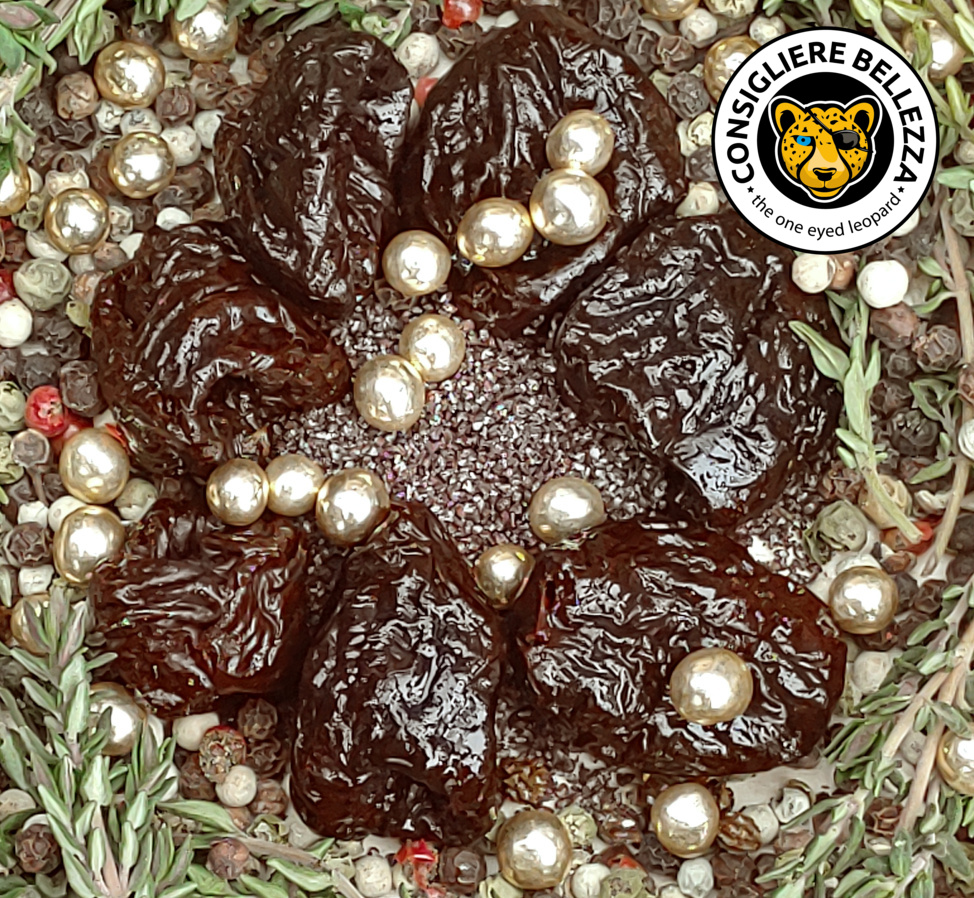“Dolce di Giorno” does come in a disguise. It starts very sweet, the scent of dried plums, overripe and ready to be eaten. The kind of sticky dried fruits that one tends to overeat on and regrets later when the stomach revolts.
The first gourmand opening accords are quickly followed by pepper and spices. Yes, also woods are there and not only in small portions. The sweetness of the first few minutes somehow stays in one’s nose, but the perfume changes to a different, drier scent very fast. This does explain why reactions by other people are usually not as enthusiastic as by the wearer him- or herself. The audience misses the grand overture and comes a bit late to the show, in the middle of the performance. Only the wearer him- or herself gets the beautiful first few minutes.
With time, also within the first hour, the fragrance changes to a less soft smell. Spices do take over in earnest: cardamom, cinnamon and thyme. Thyme is strong. There are sparks of sweetness flying up from time to time. But nothing in the league of the first 5 minutes.
The scent starts “for ladies only”, but within 1 hour is a true unisex. For a man – to me – it is still too sweet, but I am not an advocate for men wearing strong or sweet perfumes anyway. A lot of men seem to like “Dolce di Giorno” on themselves. That is the conclusion I draw from the comments of other perfume lovers and their publicly available descriptions of “Dolce di Giorno”.
The name is strangely inappropriate; the perfume has no resemblance to a dessert. When looking at the scent notes, there is also no recipe forthcoming that might taste good. Googling the name, I came upon a song by Lucio Battisti called “Dolce di Giorno”. It is about the end of a relationship and sounds like an Italian Blues song. The perfume reminds me of the song and vice versa. Not too harmonious, bittersweet, and strong.

The colour of the perfume is dark purple brown, similar to the dried plums in the picture. The overall impression of “Dolce di Giorno” is dark, it is not a light, sun drenched scent. It is much more comparable to a landscape that got too much sun during a hot summer. It has that very special feeling, like concentrated summertime, that can be seen through the dried and cracked ground and the intensified smells.
Bois 1920, the brand that created “Dolce di Giorno” and many other beautiful perfums, was founded in 1920 as Bottega Italiana Spigo by Guido Galardi, or so the legend says. He started to work with local plants and made his very own perfumes. Why the shop was closed again in 1925 remains a mystery to me, most likely next to the official statement that the son of the founder had other interests, there were a few other reasons involved – the 1920s were not an easy time. To be honest, it is not even fully clear if there was a shop at all – maybe Guido experimented just for his own amusement. After a long gap, in 2005, the grandson of Guido Galardi, Enzo Galardi, reinvented some of his grandfather’s perfume recipes for new. Enzo Galardi, from what I could find out, started in the perfume world in 1985. His name is attached not only to perfumes of his family brand Bois (Bottega Italiana Spigo) 1920, but also with Antiqua Firenze, Baldi and IK-KO 1954.
No idea if he owns all the brands or only works for them. Somewhere he must have learned the art of perfumery – but the company website of Bois 1920 does not provide much information. There is no Wikipedia entry about him and no interviews that I could find – Enzo Galardi seems to appreciate his privacy. And no reason why he should not. The brand Bois 1920 gave out a nice enough story about its origins, and the important matter is that the perfumes are very beautifully composed and easily available through online order worldwide.
Enzo Galardi stays very productive. His niche fragrance collection is growing year by year. New perfumes are released quite regularly. The brand will be featured here from time to time, it covers so many scent directions. In case Enzo Galardi is the only nose behind the various perfumes, maybe with a little help from his grandfathers’ recipes, he is one of the big creators in today’s niche perfume business. Being able to compile new fragrances for different audiences that have different tastes is the prime league of perfume making. Most brands do work with a group of noses or perfumers to cover all scent directions.
“Dolce di Giorno” is a pleasure in itself; the opening accord is just too wonderful. And it is a symbol of something starting sweet changing to another dimension. Lucio Battisti’s song does describe it very well. We all know the feeling and we all know, even without a happy end, that the beginning was worth it. Again, and again.

